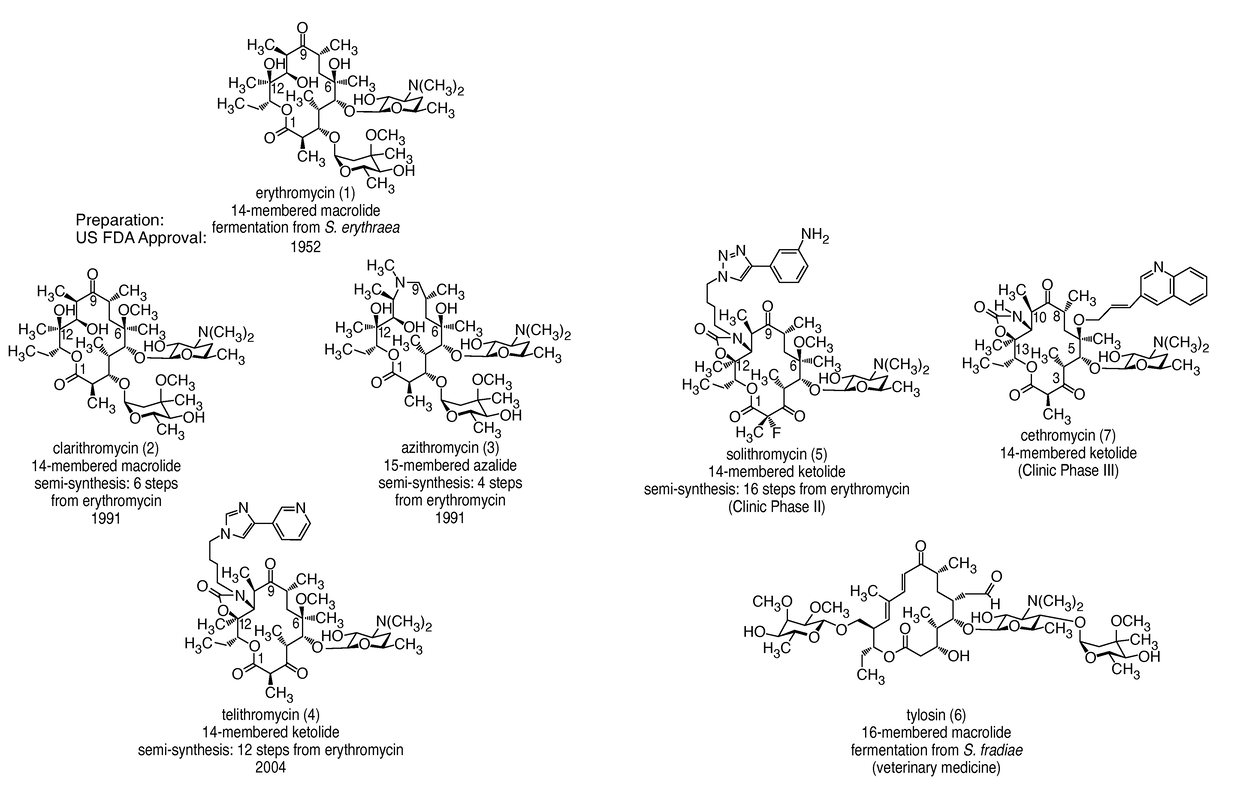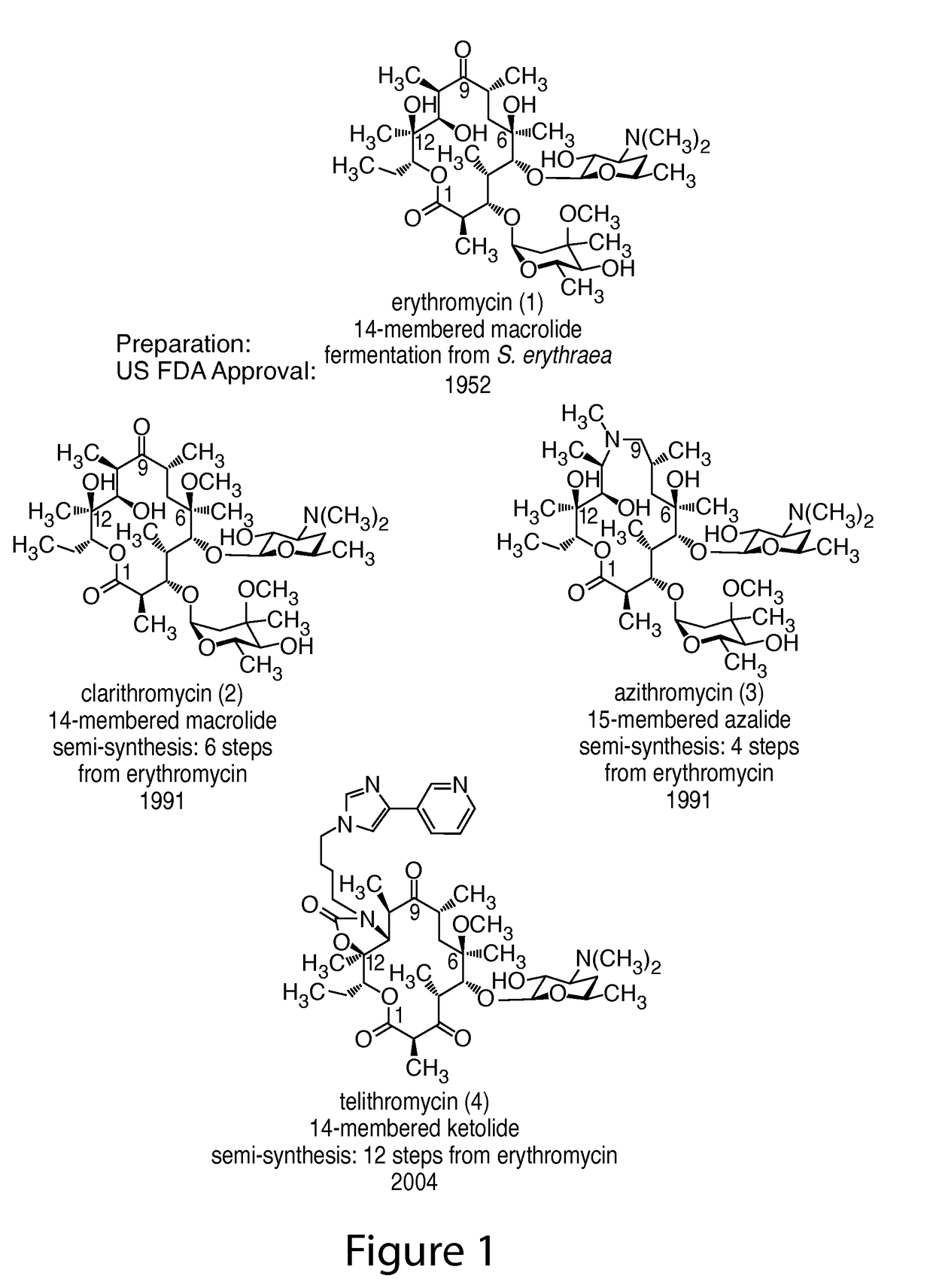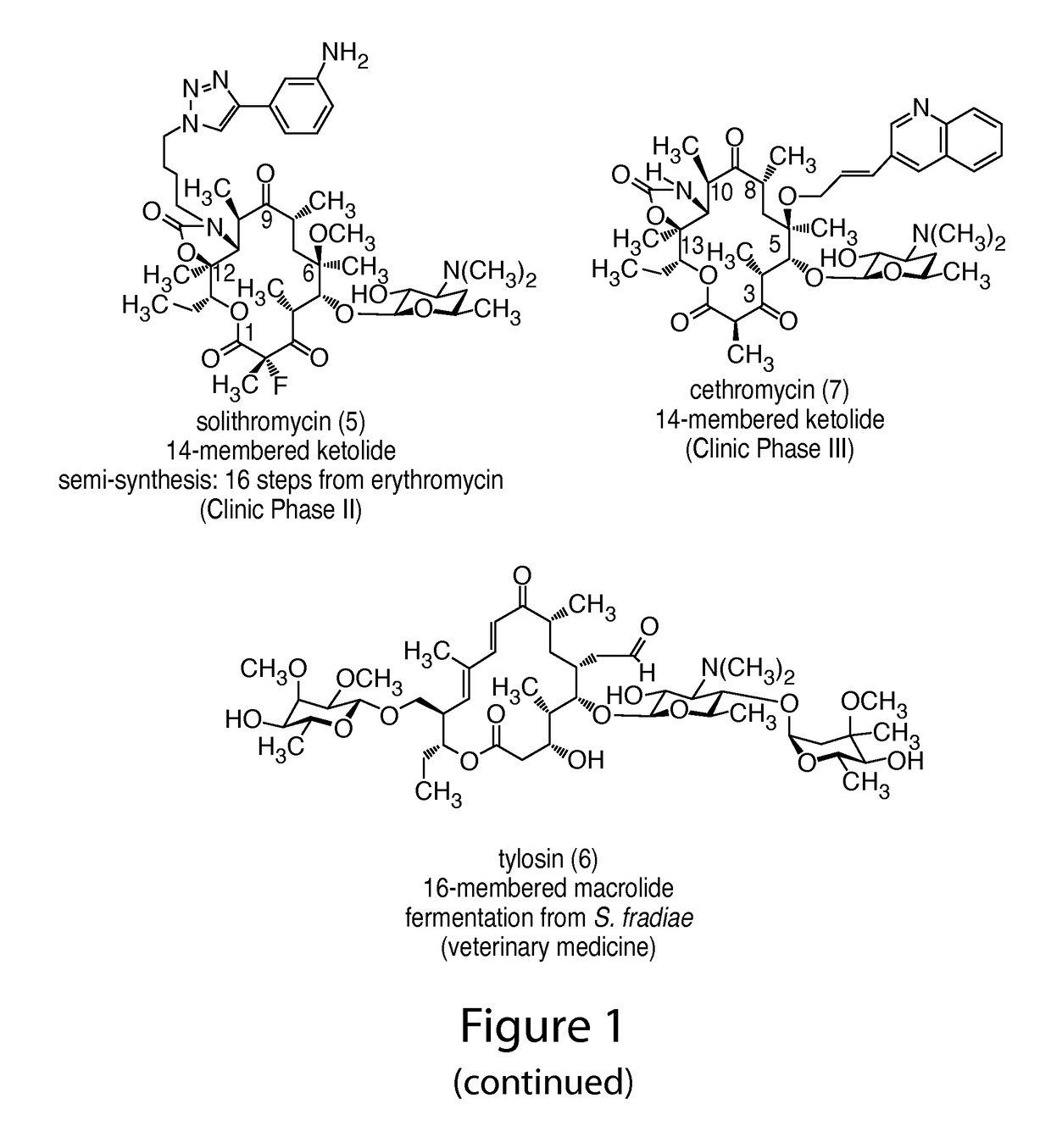14-membered ketolides and methods of their preparation and use
a technology applied in the field of 14-membered ketolides and methods of their preparation and use, can solve the problems of antibiotics not adequately addressed, current crisis is exacerbated, and the need for innovation in the field has never been higher
- Summary
- Abstract
- Description
- Claims
- Application Information
AI Technical Summary
Benefits of technology
Problems solved by technology
Method used
Image
Examples
example 1a
Preparation of Aldehyde and Phosphonate Eastern Halves
[0776]
Step 1:
[0777]To a solution of (S)-tert-butyl(3-iodo-2-methylpropoxy)diphenylsilane (74.1 g, 169 mmol) in ether (512 mL) was added t-BuLi (1.52 M, 222 mL, 338 mmol) dropwise at −78° C. The resulting slightly cloudy suspension was stirred for 30 min. At this point, TLC(100% hexanes) indicated complete halogen-lithium exchange. A 1.5 M solution of MgBr2 in 3:1 ether:benzene (123 mL, 184 mmol) (Nakatsuka, M.; Ragan, J. A.; Sammakia, T.; Smith, D. B.; Uehling, D. E.; Schreiber, S. L. J. Am. Chem. Soc. 1990, 112, 5583-5601.) was added dropwise. The resulting suspension was stirred for 30 min at −78° C. and briefly warmed to 0° C. (5 min) to give a clear solution. After cooling back to −78° C., a solution of (R)-1-(2,2-dimethyl-1,3-dioxolan-4-yl)ethanone (22.15 g, 154 mmol) (Leyes, A. E.; Poulter, C. D. Org. Lett. 1999, 1, 1067-1070.) in ether (50 mL) was added dropwise to Grignard solution above via cannula. The resulting white m...
example 1b
Eastern Half Without C2 Methyl via β-keto-t-Butyl Ester
[0787]
[0788]Step 1:
[0789]The aldehyde (575 mg, 1.443 mmol, 1 equiv) was dried by azeotropic distillation (benzene) and then dissolved in dichloromethane (11 mL). Magnesium bromide ethyl etherate (1.86 g, 7.21 mmol, 5.0 equiv) was added in one portion to this solution and the resulting mixture was cooled to −78° C. A solution of 1,3-bistrimethylsilyl dienol ether (1.37 g, 4.33 mmol, 3.0 equiv, for preparation see: Takai, K.; Nawate, Y.; Okabayashi, T.; Nakatsuji, H.; Lida, A.; Tanabe, Y. Tetrahedron 2009, 65, 5596-5607) in dichloromethane (1.5 mL) was added dropwise via syringe over 5 min to the aldehyde mixture at −78° C. The reaction mixture was stirred at this temperature for 3 h, then saturated aqueous ammonium chloride solution (12 mL) was added. The cooling bath was removed and the reaction flask was allowed to warm to 23° C. Water (40 mL) and dichloromethane (50 mL) were added and the phases were separated. The aqueous pha...
example 1c
Synthesis of C6 Allyl Derivatives
[0793]
[0794]Step 1:
[0795]To a solution of Hunig's Base (10.48 ml, 60.0 mmol) in DMF (22 mL) cooled in an ice-water bath was added pent-4-enoic acid (2.041 ml, 20.00 mmol), HOBT (3.06 g, 20.00 mmol), and EDC (4.22 g, 22.00 mmol) sequentially. The solution was stirred at 0° C. for 5 minutes, and remains a light orange slurry throughout this time. (R,R)-pseudoephenamine (5g, 22.00 mmol) (freshly crushed) was added in one portion, and the vessel was allowed to warm to 23° C. After 5 minutes, some product was visible by TLC (10% MeOH / DCM, +1% NH4OH). After 20 minutes, the solution was completely homogeneous. After 1 h, conversion was>50%. At 19 h, progress had not changed. The mixture was diluted with water (200 mL) and extracted with ethyl acetate (3×75 mL). The organic layers were combined and the resulting light yellow solution was washed with water (2×100 mL), sat aq NaCl (1×75 mL), dried through a pad of sodium sulfate, and concentrated. The product ...
PUM
 Login to View More
Login to View More Abstract
Description
Claims
Application Information
 Login to View More
Login to View More - R&D
- Intellectual Property
- Life Sciences
- Materials
- Tech Scout
- Unparalleled Data Quality
- Higher Quality Content
- 60% Fewer Hallucinations
Browse by: Latest US Patents, China's latest patents, Technical Efficacy Thesaurus, Application Domain, Technology Topic, Popular Technical Reports.
© 2025 PatSnap. All rights reserved.Legal|Privacy policy|Modern Slavery Act Transparency Statement|Sitemap|About US| Contact US: help@patsnap.com



